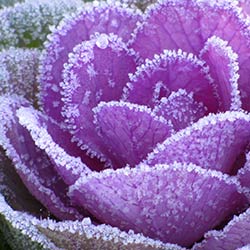
The similarities between humans and plants are that both are living organisms, both need things to keep them living, both produce substances that keep the other living, both are multi-cell organisms, both reproduce through sexual means by fertilization, both breathe, and both need water to survive.
When Cheryl and her husband Gene moved into a new house, they purchased a thriving set of ficus trees with braided trunks and no instructions. Gene insisted on placing them near the front door; Cheryl apprehensively agreed. Soon the trees began dropping leaves daily — by the dozens. Cheryl’s concern rose daily, finally compelling her to “go into conversation” with the ficus to find out how she could restore their ability to thrive.
She was told they needed more consistent watering, more light and more plants close by; they were lonely after having come from a highly populated greenhouse with lots of plant friends to this quiet place with only occasional visitors.
At the time, Cheryl did not realize she was intuitively connecting to the trees. After years of developing various intuitive styles, she learned that communicating with plants, animals and other things in our environment is part of the Inter-relational Intuition Style, one of the Eight Intuition Styles that we assist people in mastering.
For the ficus to regain their health, Cheryl made an agreement with them: she put a lamp with a timer near them, brought additional plants into the area, and began watering them regularly. With these changes, the trees began to flourish once again. A few years later, Cheryl told this story to a friend with an academic background in biology, who confirmed that what she learned from the trees was aligned with what was scientifically known about their environmental needs.
From the moment of our first breath until our last, humans are interdependent with the plant kingdom. We exhale carbon dioxide, which plants need for their sustenance. In exchange for CO2, plants produce oxygen, providing us with what we need to live.
Science is now discovering that humans are, in fact, more similar to plants than anyone had ever previously imagined. For example, we have genomes, the complete set of genetic information that living things pass on to the next generation. The human genome is similar to that of other animals — and also to plants. Both human and plant genomes contain around 25,000 genes.
Humans have an ancient and deeply personal (both conscious and unconscious) relationship with plants and the Earth. Because you can read this, you are a homo sapien. The word “Homo” is linked to the word “humus,” meaning “Earth,” related to the idea that we are “Earthly beings” versus the idea that we are Gods and Goddesses of the Celestial realms. From the indigenous perspective, Earth is the Great Mother from which we emerge. Our relationship with Earth — and everything she sprouts — is organically resonant, enduring and deeply intertwined. Our capacity to consciously interrelate with plants seems heightened after winter’s dormancy. The transition into spring ushers the great thaw as life forces emerge, and Earth and her many expressions — plants, animals and humans — renew their interconnectedness.
People with a “green thumb” seem to have a natural affinity and skills in Inter-relational Intuition. They are able to sense and understand plants, their needs and gifts, and their seasonal growth cycles. For example, Cheryl is constantly amazed that carrots with their tops intact, even in the refrigerator, begin to sprout as spring arrives.
During seasonal transitions, be especially mindful that our interdependence with plants fosters mutual thrivability. For example, we respect that we should not take all the sap from the maple trees, though the syrup replenishes our much needed sugar reserves depleted over winter. Indigenous peoples know it is important to gather, yet leave enough sap so that both trees and humans can thrive.
When we bring this type of conscious connecting, communicating and interrelating to the Earth, this is using “Inter relational Intuition,” the eighth Intuitive Style. Inter-relational Intuition is awareness, understanding and engaging anything.
 The cabbage flower was sitting at the doorstep of Jeffry’s brother’s house in Seattle. Jeffry saw it and felt compelled to photograph it because of its beauty and expressive nature. This plant said, “I am the cyclical nature of our growing levels of consciousness. All aspects of life bring us closer and closer to the most important lessons of life…and the Universe.”
The cabbage flower was sitting at the doorstep of Jeffry’s brother’s house in Seattle. Jeffry saw it and felt compelled to photograph it because of its beauty and expressive nature. This plant said, “I am the cyclical nature of our growing levels of consciousness. All aspects of life bring us closer and closer to the most important lessons of life…and the Universe.”
Whether we are conscious of it or not, the connection between plants and humans is intimate, ancient and deep. Everyone is aware of this relationship on varying levels. One such level is the Inter-relational Intuition level, which we also know can be developed.









